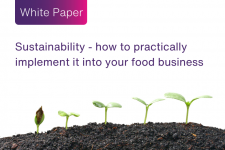Chilled foods embrace thin-walled packaging
Europe, with demand in the chilled sector for the format increasing
at the fastest rate, according to a new report.
In a survey of the segment, Applied Market Information (AMI) says thin-walled packaging has become an increasingly well delineated sub-segmentof the rigid plastics market. In total in Europe the segment accounts for about two million tonnes of thermoplastics.
The report indicates some of the trends in this plastic packaging segment, as the market respondsto higher raw material costs, and changes in demand for particular types of food products.
Thin walled packaging is used mainly to display goods for sale, but the format may alsoincorporate features for extending shelf-life and other functions.In the AMI report, thin walled packaging is defined to include yoghurt pots,butter and margarine containers, meat and fruit trays, blister packaging and similar containers. It excludes CD, DVD and blow moulded packaging.
The largest single application of thin-walled packaging is dairy products, which account for22 per cent of the market. The fastest growing application is in the chilled ready meals segment, in which demand is growing at about six per cent,AMI reported.
"While some of the applications for thin-walled packaging are mature others are evolving rapidly such as meatpackaging, which is in the process of shifting from being packed within store to being packedcentrally," AMI stated.
The fruit and vegetables segment accounts for eight per cent of the demand, meat, fish and poultryanother eight per cent, frozen foods eight per cent, delicatessen products for seven per cent,bakery for five per cent, yellow fats for five per cent, chilled meals for four per cent and ambientproducts two per cent.
Disposable products account for another 17 per cent of the demand and non-food products 14 percent, AMI stated.
In terms of composition, PET and PP are gaining market share, while polystyrene (PS) andpolyvinyl chloride (PVC) are losing market share.
"Recently, plant-based and compostable polymers have emerged that offer brand owners exciting newopportunities to align sustainable and natural food propositions -- such asorganic food -- with the packaging itself," AMI stated in its report.
The largest three producers of thin-walled packaging in Europe are Huhtamäki, Klöckner Pentaplast and theRPC Group.






